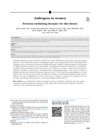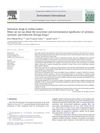Optimization, Characterization, and Follicular Targeting Assessment of Tretinoin and Bicalutamide Loaded Niosomes
November 2023
in “
Scientific Reports
”
TLDR The niosomes effectively target hair follicles for acne treatment.
This study focused on developing tretinoin (TRT) and bicalutamide (BCT) loaded niosomes for targeted acne treatment, aiming to enhance skin penetration and reduce systemic side effects. Using the thin film hydration technique and Design-Expert software, the researchers optimized the formulation, which was characterized by a spherical shape, an average diameter of 319.20 ± 18.50 nm, and a zeta potential of −29.70 ± 0.36 mV. The niosomes demonstrated high entrapment efficiencies of 94.63 ± 0.50% for BCT and >99% for TRT, with loading capacities of 1.40 ± 0.01% and 1.48 ± 0.00%, respectively. In vivo studies indicated significant accumulation in hair follicles, suggesting that this niosomal co-delivery system could be effective for acne management with follicular targeting potential.









